Darlingtonia in the wild, Mountain Creek, Curry Co, OR
Oct 22, 2014 13:29:49 GMT -5
yosemite, rmeyer, and 2 more like this
Post by meizzwang on Oct 22, 2014 13:29:49 GMT -5
Here's another site way high up in the mountains that's actually relatively small, but jam packed with plants! We nick-named it the mountain creek site because a creek runs right through the middle of the habitat and, well, it's in the mountains! Not really rocket science  The plants here are absolutely outstanding, and many were producing very large traps.
The plants here are absolutely outstanding, and many were producing very large traps.
Here's the creek that gives the site its name: despite low water levels and record drought, there was still plenty of water at this site:
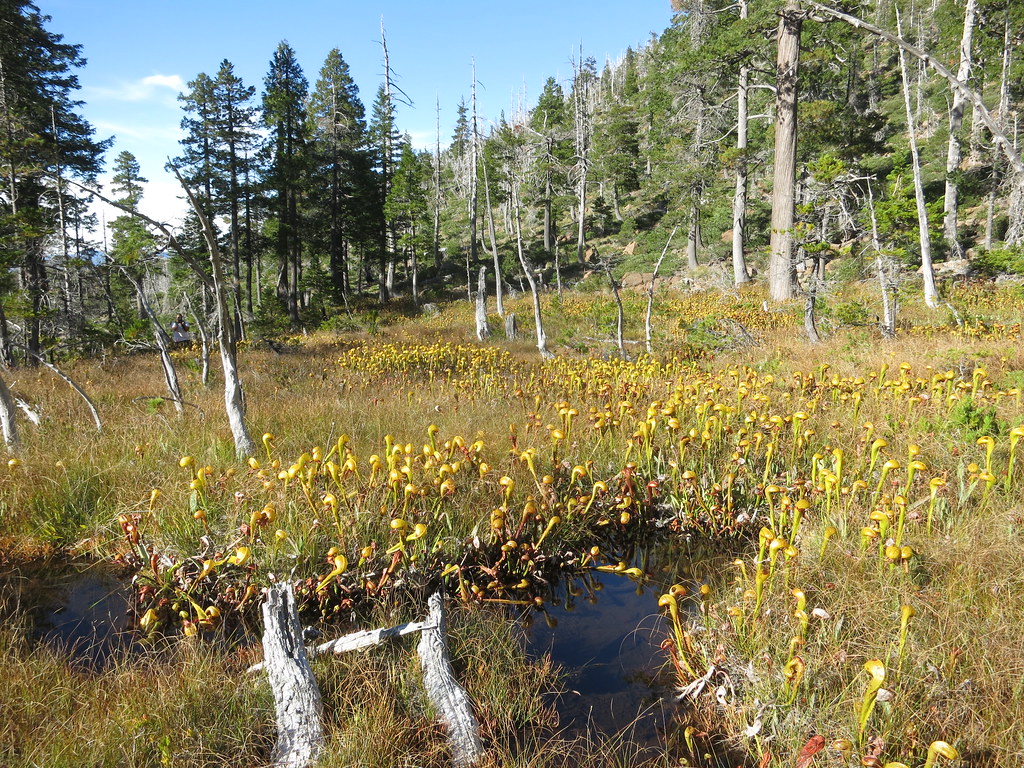
Do you see the mountain the background? It's made of very porous rocks, and those rocks collect moisture. Because of the volume of rocks and spaces in between the rocks of this mountain, water collects like a sponge. Downhill (where the darlingtonia site is) water constantly seeps out from the mountain, and the beginning of the spring is where Darlingtonias grow:
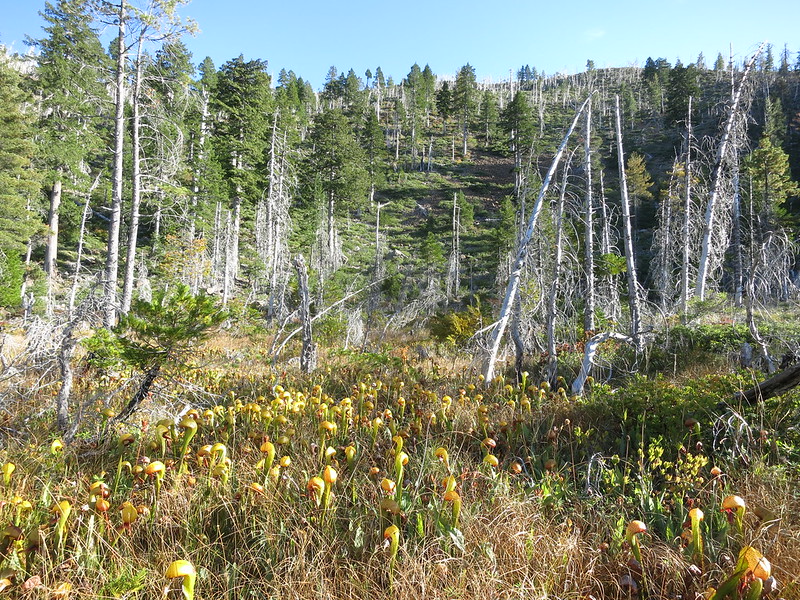
All of this water feeds down a steep creek, which eventually feeds into the river that goes to the ocean. At the bottom of this valley in the background is the creek:
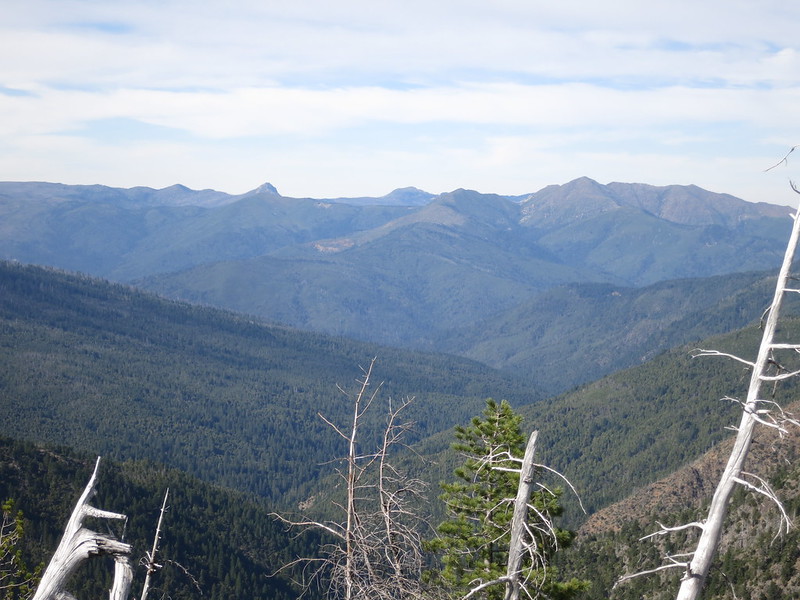
But let's go back to the site. "Ay, yo Rob!!!":
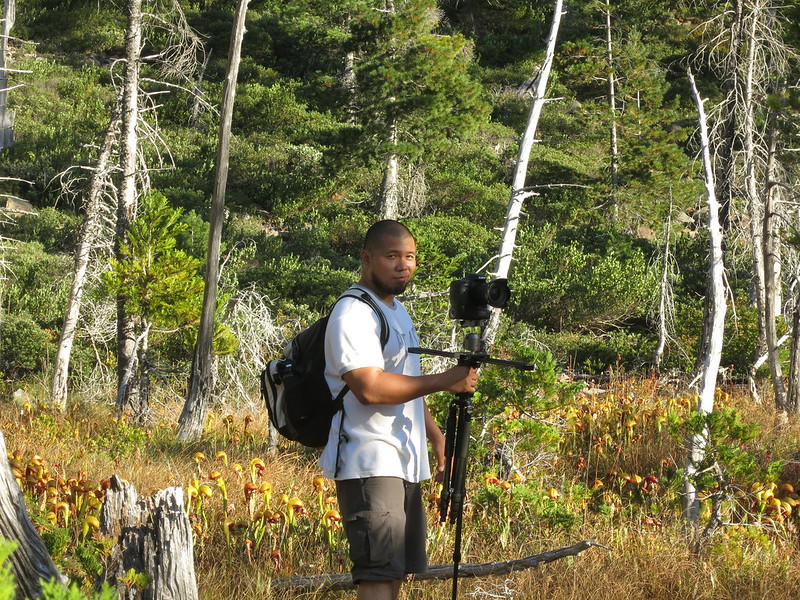
remember all of those darlingtonias you killed in the past? Well, don't feel so bad, they also die out in the wild. Here are some skeletal remains and even some dying seedlings. Why are they biting the dust? My guess, in this instance, is heat stress. Usually, water diversion causes issues, but you can clearly see water in this photo:
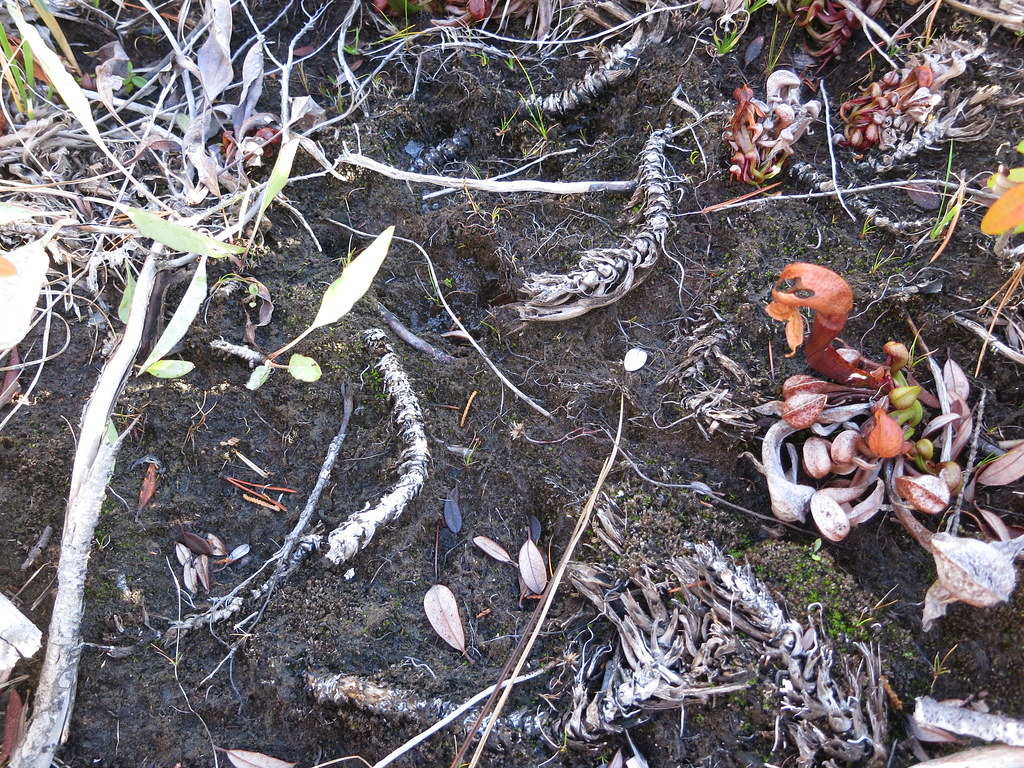
Further evidence of heat stress:recent burning of the traps:
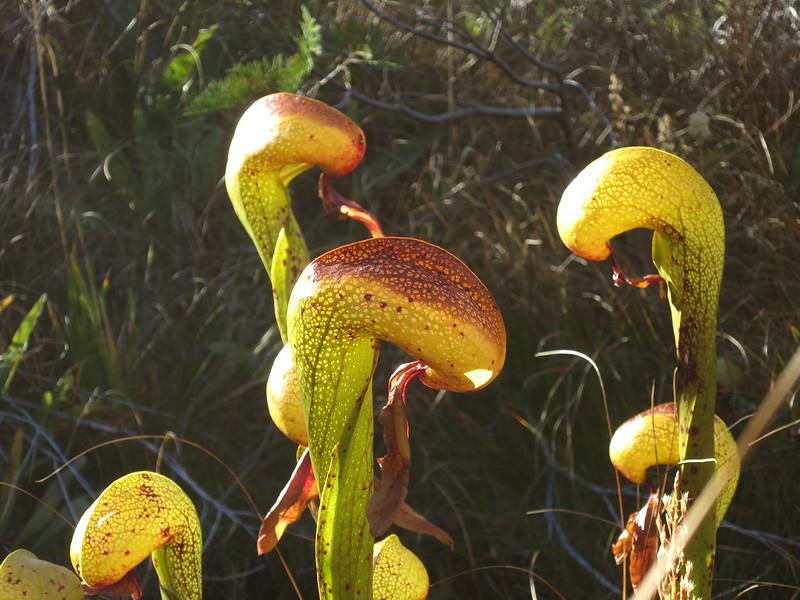
Rob tested the water at various sites, and the range was between 30ppm to about 70ppm. I believe this site was around 40 ppm (can't remember for sure). Salty water isn't likely the cause of death here:
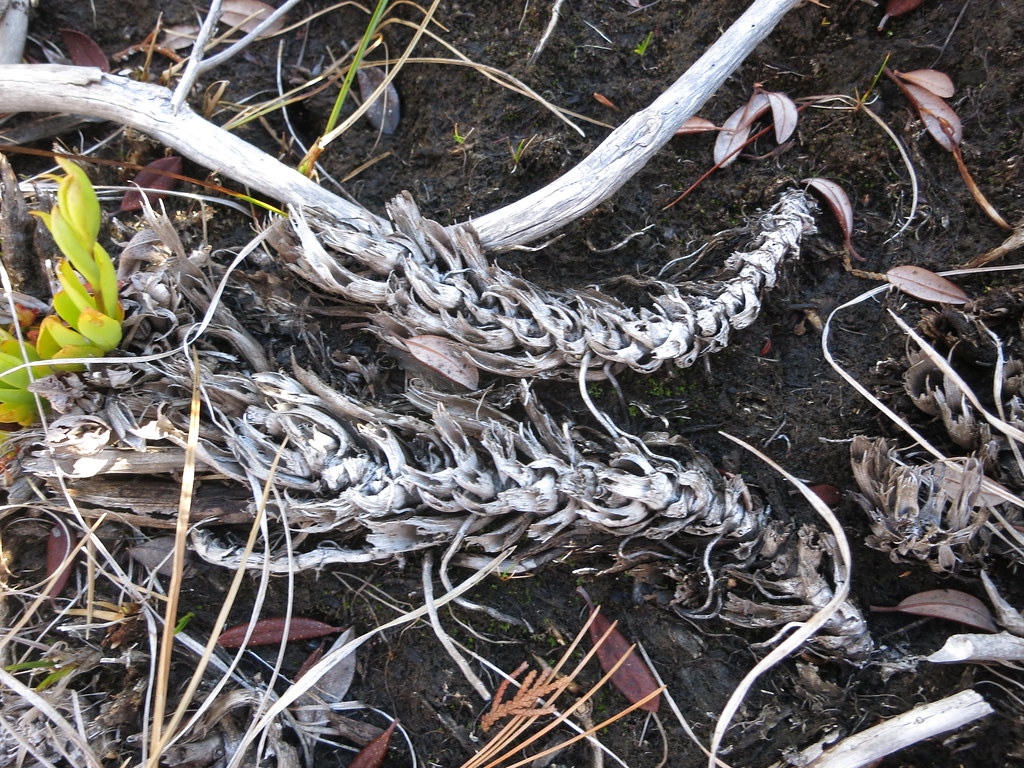
This was definitely a site to behold:
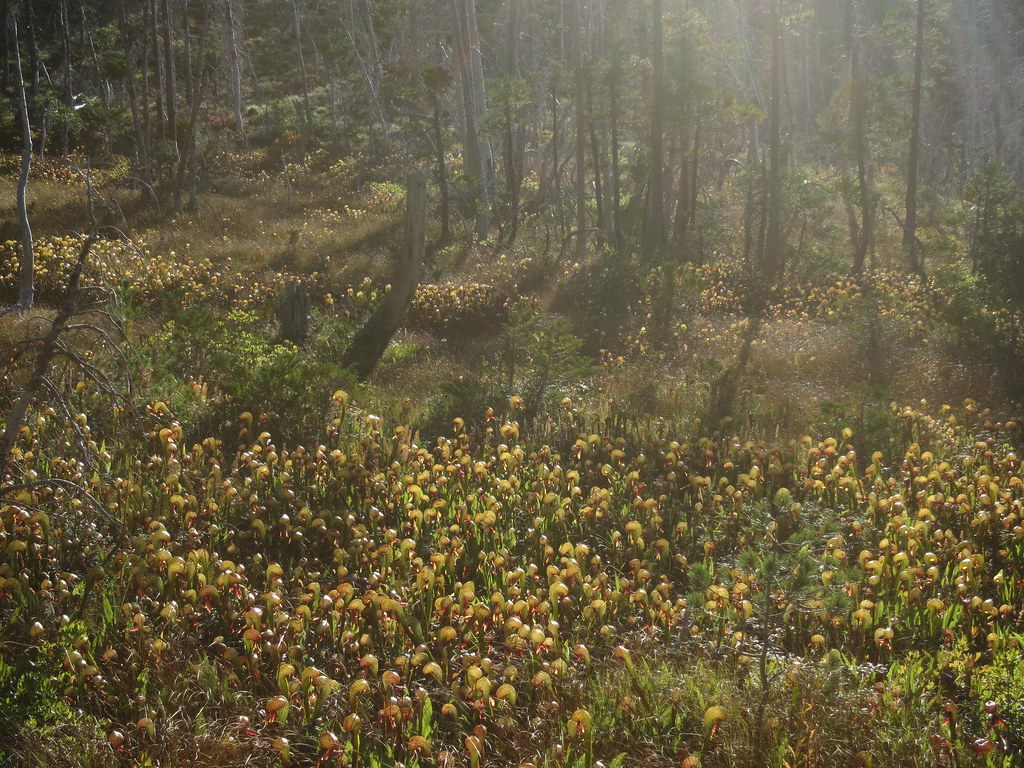
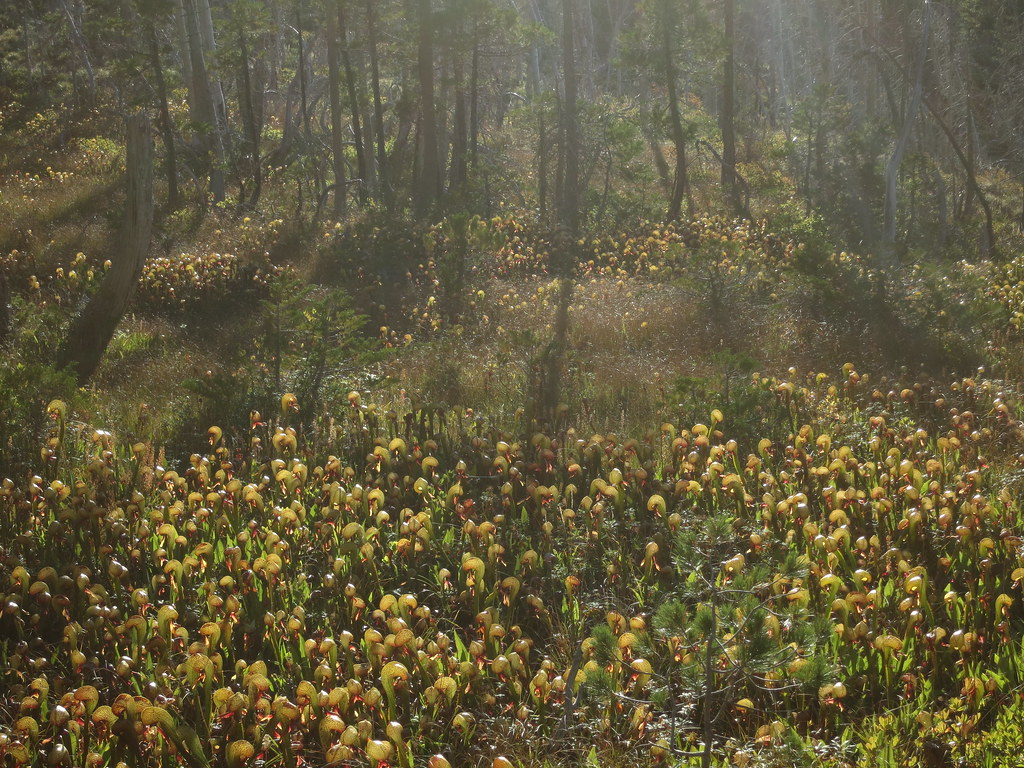
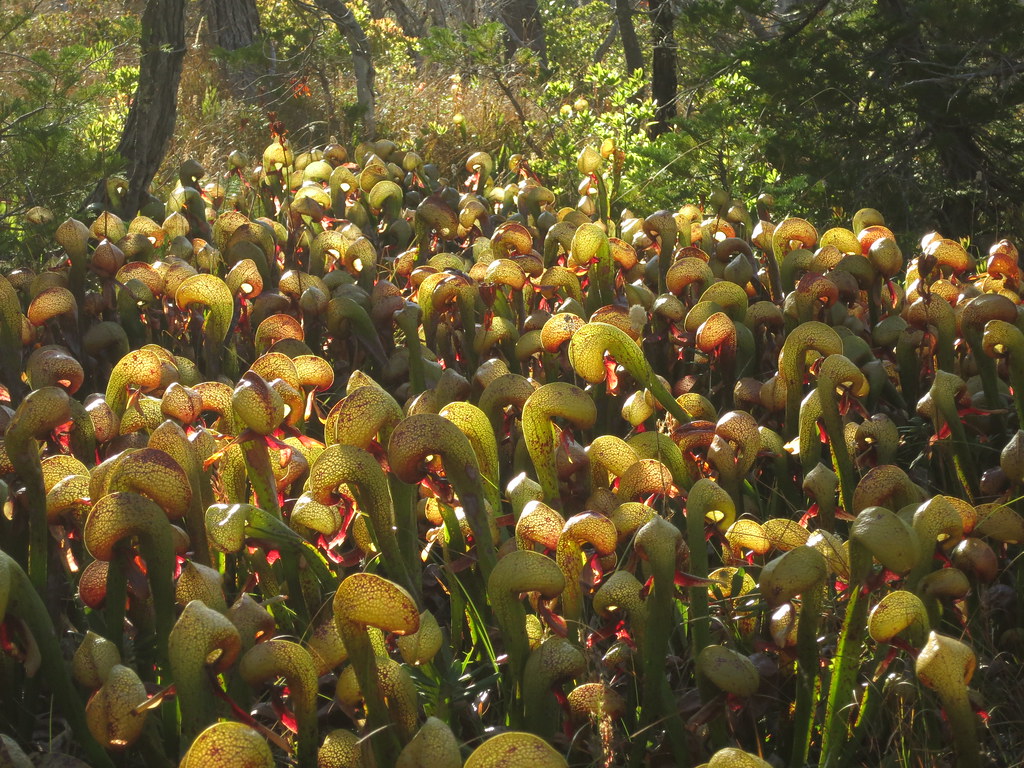
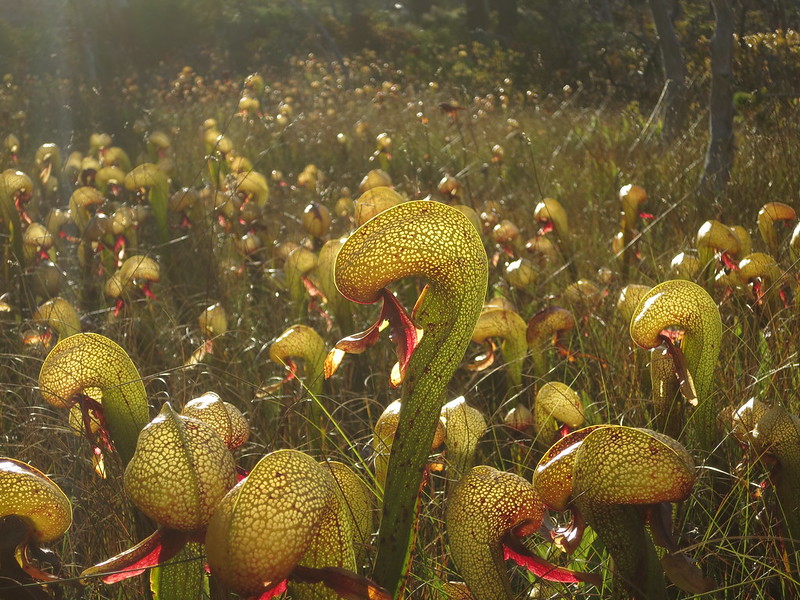
Some red plants grow here too!
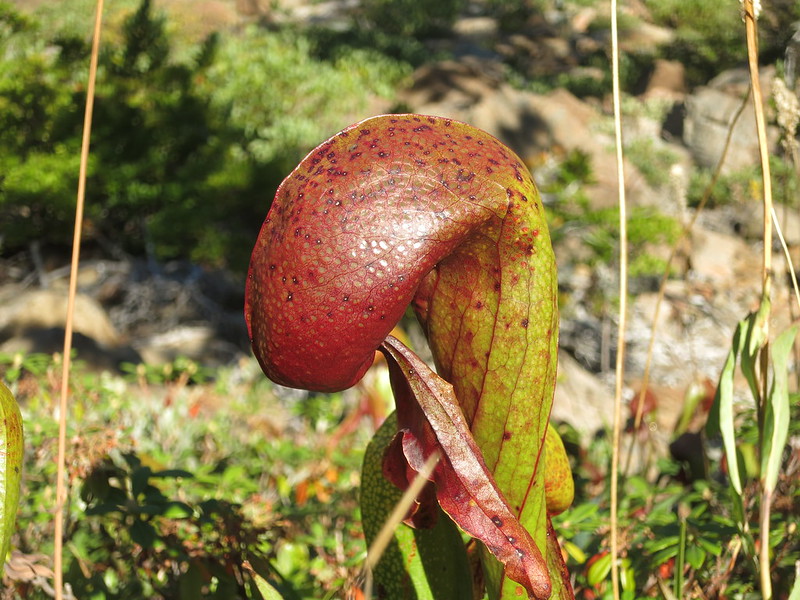
Powdery mildew is common in the wild:
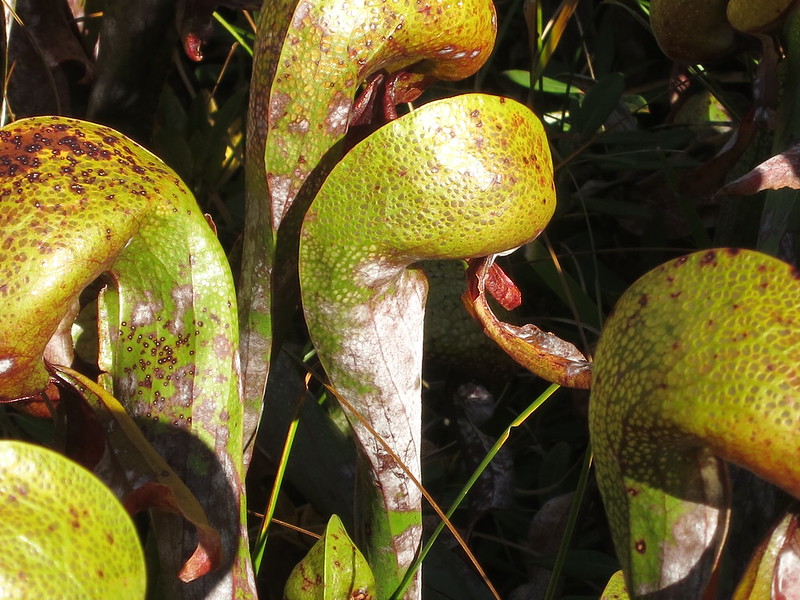
Plants can form dense populations:
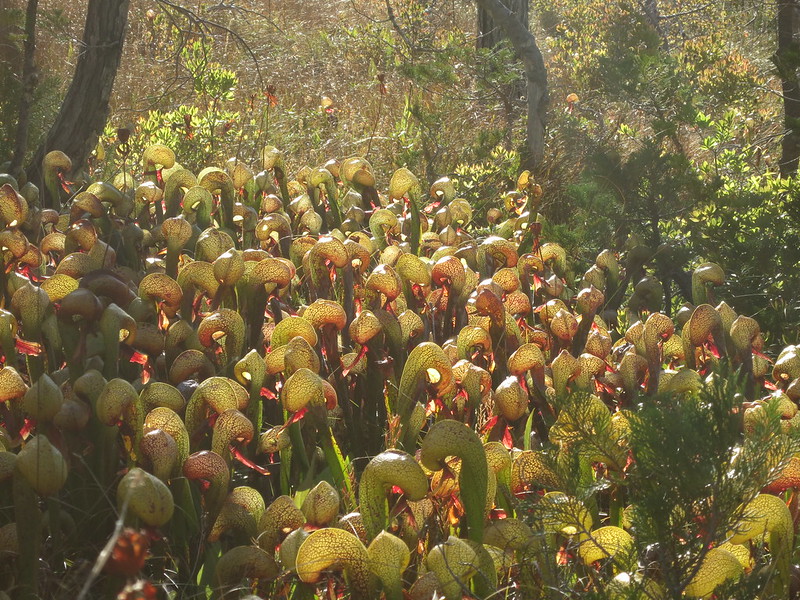
What are Darlingtonias eating in the wild? I've been visiting sites for almost 2 decades now and have never opened one up, but I felt it was important for us all to see what's inside: cucumber beetles, and mainly flying insects. Notice the maggots at the top of the pile of dead bodies: what you can't tell is before the trap was split open, it was filled with this really nasty, rotting water! The maggots were on top of all the corpses so they wouldn't be under water:
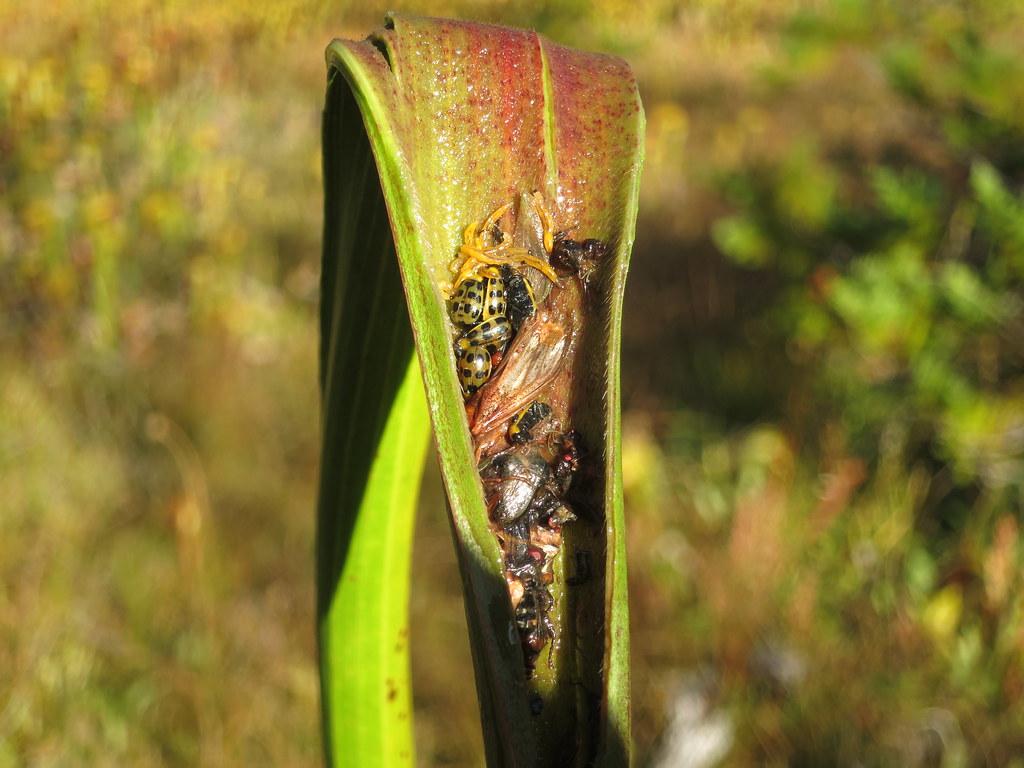
More photos to come, so stay tuned!
 The plants here are absolutely outstanding, and many were producing very large traps.
The plants here are absolutely outstanding, and many were producing very large traps. Here's the creek that gives the site its name: despite low water levels and record drought, there was still plenty of water at this site:

Do you see the mountain the background? It's made of very porous rocks, and those rocks collect moisture. Because of the volume of rocks and spaces in between the rocks of this mountain, water collects like a sponge. Downhill (where the darlingtonia site is) water constantly seeps out from the mountain, and the beginning of the spring is where Darlingtonias grow:

All of this water feeds down a steep creek, which eventually feeds into the river that goes to the ocean. At the bottom of this valley in the background is the creek:

But let's go back to the site. "Ay, yo Rob!!!":

remember all of those darlingtonias you killed in the past? Well, don't feel so bad, they also die out in the wild. Here are some skeletal remains and even some dying seedlings. Why are they biting the dust? My guess, in this instance, is heat stress. Usually, water diversion causes issues, but you can clearly see water in this photo:

Further evidence of heat stress:recent burning of the traps:

Rob tested the water at various sites, and the range was between 30ppm to about 70ppm. I believe this site was around 40 ppm (can't remember for sure). Salty water isn't likely the cause of death here:

This was definitely a site to behold:




Some red plants grow here too!

Powdery mildew is common in the wild:

Plants can form dense populations:

What are Darlingtonias eating in the wild? I've been visiting sites for almost 2 decades now and have never opened one up, but I felt it was important for us all to see what's inside: cucumber beetles, and mainly flying insects. Notice the maggots at the top of the pile of dead bodies: what you can't tell is before the trap was split open, it was filled with this really nasty, rotting water! The maggots were on top of all the corpses so they wouldn't be under water:

More photos to come, so stay tuned!





 Here are images of plant progress on 03/16/2023
Here are images of plant progress on 03/16/2023